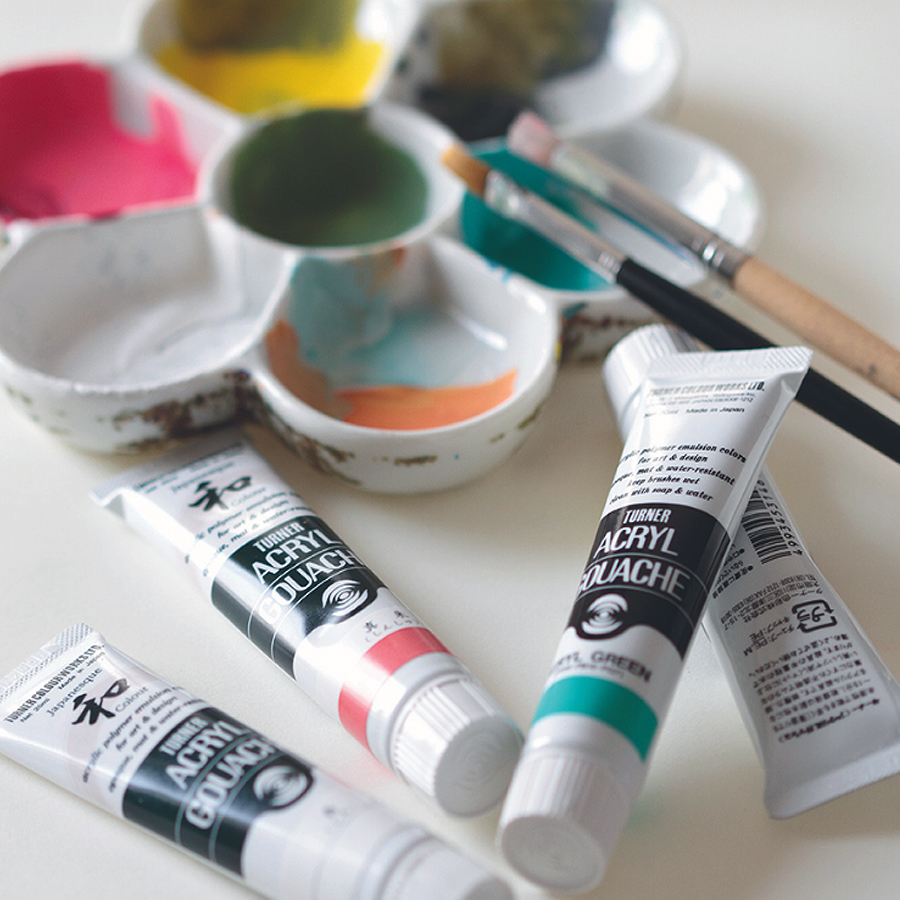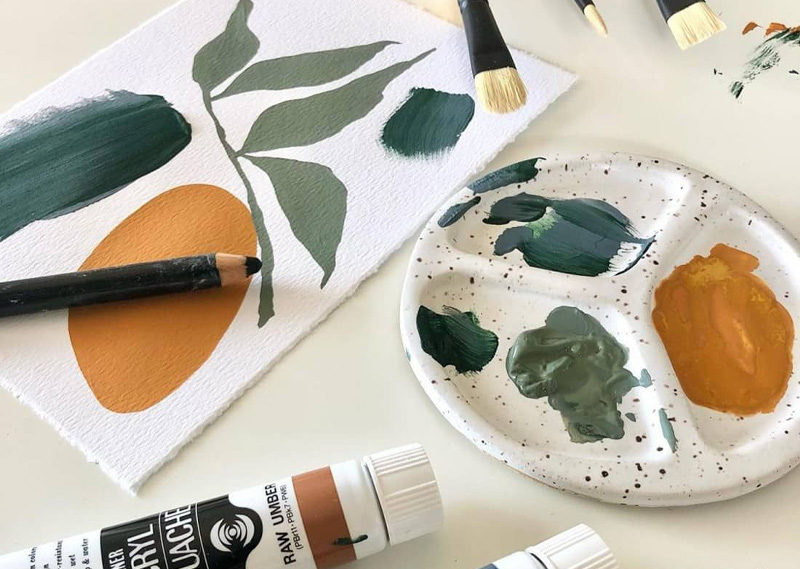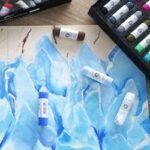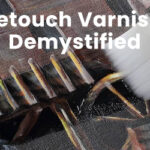Acrylic Paint vs. Gouache: What’s the Difference?
So what is the Difference…Acrylic Paint vs. Acrylic Gouache. The main difference is Acrylic paints include an acrylic polymer, whereas gouache contains Arabic gum, is water-based and dries to matte finish (the same that is used in watercolors–means that it can be reactivated with water).
In this article, you will get a break down from an art supplier with artists on staff that use both acrylic paint and gouache on a daily basis! Understand the key differences, uses, what you can do with each plus some questions and answers at the end!

Paint comes in many different forms, from watercolor to oil paints, and acrylic to gouache; the different methods of mixing pigments and binders has created an incredibly diverse array of options. This has been especially true since the creation of acrylic paint in the mid-20th century.
Now, the growing popularity of traditional gouache paint has opened the door for more variations of paint to exist, such as the more modern invention of acrylic gouache.
While many people and artists might assume acrylic paint and acrylic gouache–or acrylic gouache and traditional gouache–are one and the same, it’s crucial to understand the differences before starting your next project.
In this article, we’ll explore and compare these distinctions and provide valuable tips on when and where each type should be used.

What is the Difference?
Acrylic Paint:
- Contains acrylic polymer binder.
- Water-resistant when dry.
- Strong, flexible, and durable.
- Suitable for various surfaces.
Acrylic Gouache:
- Hybrid paint combining opacity and matte finish.
- Uses acrylic polymer binder with higher pigment load.
- Less durable than acrylic paint.
- Quick-drying with flat, opaque colors.
- Can be applied to paper, canvas, and wood.
Traditional Gouache:
- Uses Arabic gum binder.
- Water-based and reactivatable with water.
- Highly opaque, matte finish.
- Popular among designers and animators.
- Works on watercolor paper, canvas, and wood.
a little about acrylic paint…
First, let’s start off by talking a little about acrylic paint and what differentiates it from others. Acrylic paint is created by combining pigment with an acrylic polymer binder. The acrylic polymer’s chemical structure creates a paint that does not reactivate once it has dried, unlike watercolor or a traditional designer gouache.
Acrylic paint’s high polymer binder content also means that it is very strong and flexible and is more resistant to wear, tear, fading, or yellowing than a traditional gouache. Thus, it can be used on a variety of surfaces, including stretched canvas, paper, wood, and is even useful in outdoor settings, such as for murals.
gouache, on the other hand…
Traditional gouache, on the other hand, originally became popular among designers and animators for its highly opaque, matte finish. This means that it can easily be photographed and scanned without the glare that comes from acrylic’s glossy surface.
Traditional gouache is extremely workable; its gum arabic binder–the same that is used in watercolors–means that it can be reactivated with water.
This reactivation can be irritating for designers or animators that want to make quick edits to their paintings without smearing the underlying layers. Thus, the star child of acrylic and gouache was born–Acrylic gouache.

What is Acrylic gouache? It is a hybrid paint…
Acrylic gouache is a hybrid paint that combines the opacity and matte finish of traditional gouache and acrylic’s ability to resist reactivation once dry. It is made by combining pigments with an acrylic polymer binder, similar to acrylic paint. However, acrylic gouache is created with a much higher pigment load, and a reduced amount of acrylic polymer. We Recommend: Turner Acryl Gouache
This means that it is not as durable as acrylic paint and may crack or flake if not varnished or if applied too thick. But, similarly to acrylic, it can be applied to a variety of surfaces, including paper, canvas, and wood. The opaque properties of acrylic gouache make it perfect for underpainting.
While acrylic paint can also be used for underpainting, it requires more layers to achieve the same level of opacity as acrylic gouache.
Choosing Between Acrylic Paint and Acrylic Gouache
When it comes to choosing between acrylic paint and acrylic gouache, there are a few factors to consider. If you’re looking for vibrant, long-lasting colors and a durable finish, acrylic paint is the way to go. Acrylic paint is also a good choice for outdoor projects and other installations that will be exposed to the elements.
On the other hand, if you’re looking for flat, opaque colors that dry quickly, acrylic gouache is a great option.
Both acrylic paint and acrylic gouache have their own unique qualities and advantages.
By understanding the differences between the two, artists can choose the best medium for their particular project and achieve the desired results.
Common Questions and Answers
What is the advantage of acrylic gouache over acrylic paint?
A: Acrylic gouache is a great option if you want to achieve a flat, opaque look. The paint dries as quickly as acrylic paint but does not have the glossy sheen that acrylic paints have.
What is acrylic gouache paint used for?
A: Flat illustrations and designs – Acrylic gouache paint is a versatile medium that combines the properties of traditional gouache and acrylic paint. It is commonly used by artists, designers, and illustrators for various applications.
What surfaces are best for Acrylic gouache?
A: Acrylic gouache, like acrylic, can be used on a wide variety of substrates, including watercolor paper, canvas, wood panels, and more.
Do professional artists use gouache?
A: Yes, professional artists do use gouache! It has similar properties to watercolor and acrylic paints and are often used for illustration and design work as it dries quickly and is non-reflective. Can also be great for beginners as gouache can be re-wet.





